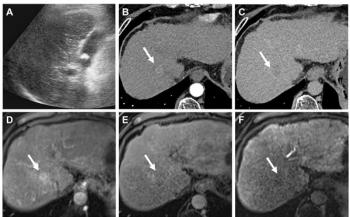
Former NFL Players May Have Enlarged Aortas
CT shows former NFL players may have enlarged aortas compared with controls.
Computed tomography scans have shown that former National Football League (NFL) players are more likely to have enlarged aortas, possibly increasing their risk of developing aneurysms, according to a study presented at
Researchers from the United States performed a retrospective cross-sectional study to evaluate whether past participation in the NFL is associated with increased prevalence of ascending aortic dilation and coronary artery calcium (CAC) on cardiac CT.
A total of 206 former NFL athletes were compared with 759 matched male subjects. All participants were older than 40 and had a body mass index (BMI) of over= 20 kg/m2. Mid-ascending aortic dimensions were obtained from non-contrast, multidetector cardiac-gated CT scans performed as part of an NFL screening protocol (former players), or as part of the XXX Heart Study, XHS (controls). CAC scores were obtained using the Agatston method. Multivariate logistic regression was performed to evaluate predictors of aortic size greater than 4.0 cm, CAC greater than 0, and CAC greater than 100 in each cohort.
The results showed the former NFL athletes had significantly larger ascending aortic diameters (3.8 cm ±0.5) compared with the controls (3.4 cm ±0.4). A significantly higher proportion of former NFL players had an aorta that was larger than 4.0 cm (29.6% players compared with 8.6% controls). After adjusting for age, race, body surface area, systolic blood pressure, history of hypertension, current smoking, diabetes, and lipid profile, the former NFL players still had significantly larger ascending aortas. Former NFL players were also twice as likely to have an aorta larger than 4.0 cm after adjusting for the same parameters. CAC scores were similar in both groups as was the distribution across CAC score categories (CAC=0, 1-100, and more than 100).
"Patients whose ascending aortas are more than 4 centimeters in diameter are generally considered to have dilation, which can progress over time and potentially weaken the wall of the aorta," co-author Christopher Maroules, MD, formerly of the University of Texas Southwestern Medical Center in Dallas and current chief of cardiothoracic imaging at the Naval Medical Center in Portsmouth, VA, said in a release. "It remains to be seen if this remodeling sets athletes up for problems later in life," he added. "We're just scratching the surface of this intriguing field, and imaging can play an important role in it."
[[{"type":"media","view_mode":"media_crop","fid":"64664","attributes":{"alt":"","class":"media-image media-image-right","id":"media_crop_3567567584086","media_crop_h":"0","media_crop_image_style":"-1","media_crop_instance":"8279","media_crop_rotate":"0","media_crop_scale_h":"0","media_crop_scale_w":"0","media_crop_w":"0","media_crop_x":"0","media_crop_y":"0","style":"height: 571px; width: 550px; float: right;","title":"3-D rendering from a cardiac CT dataset demonstrating mild dilation of the ascending aorta. ©RSNA 2017","typeof":"foaf:Image"}}]]
Newsletter
Stay at the forefront of radiology with the Diagnostic Imaging newsletter, delivering the latest news, clinical insights, and imaging advancements for today’s radiologists.




























